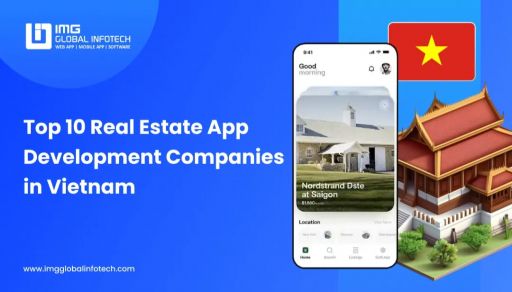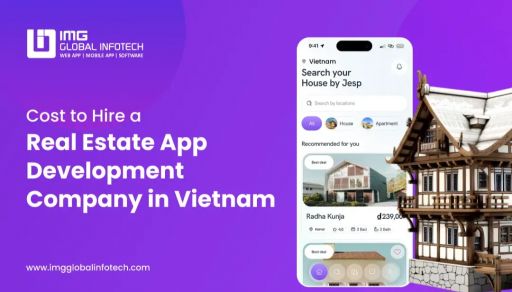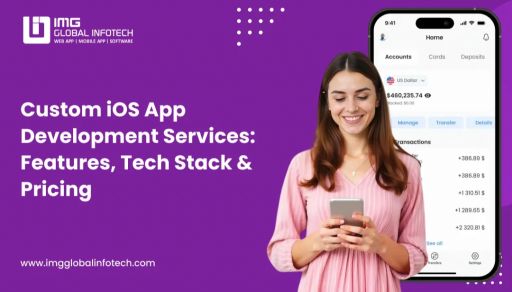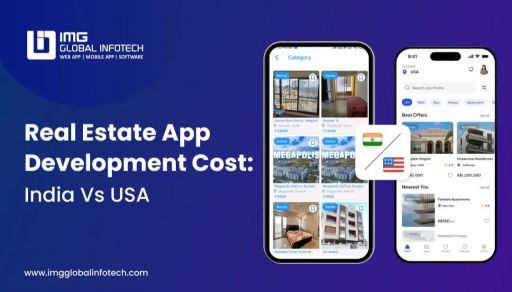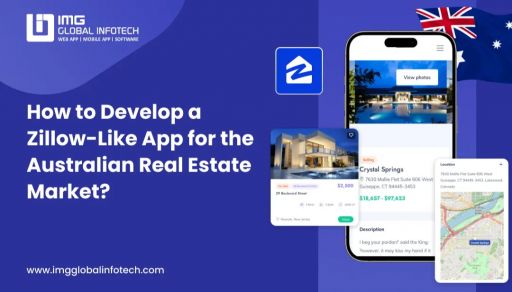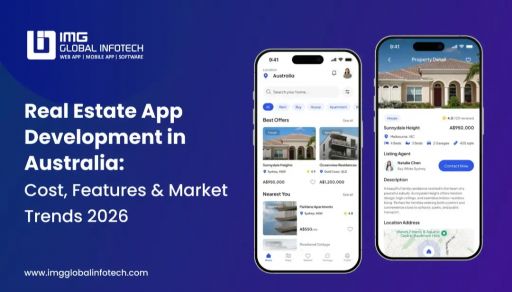Mobile App Development Life Cycle: A Complete Guide
Mohit Mittal
Jul 14, 2025

Have a brilliant app idea but not sure where to start? You're not alone. Turning an idea into a fully functional mobile application involves more than just hiring developers, it’s about following a well-structured development process known as the mobile app development life cycle.
This app development life cycle serves as the foundation for building high-quality apps that are user-friendly, scalable, and market-ready. From initial brainstorming and research to designing intuitive interfaces, writing robust code, testing for bugs, and finally launching, each stage plays an important role in your app’s success.
In this comprehensive mobile app development life cycle guide, we’ll break down every phase of the sdlc mobile app development to help you understand how great apps are built. Whether you’re a startup founder, enterprise decision-maker, or someone curious about how apps come to life, this blog is your roadmap.
Common Mobile Application Development Lifecycle Models

When it comes to building a mobile application, choosing the right mobile app development lifecycle model is crucial for ensuring project success. These models provide structured approaches to organizing tasks, managing teams, and delivering a high-quality product. Each model has its own strengths and is suited for specific types of projects, business goals, and timelines.
Below are some of the most commonly used mobile app development lifecycle models:
1. Waterfall Model
The Waterfall model is one of the oldest and most traditional software development approaches. It follows a linear and sequential process, where each phase must be completed before moving on to the next.
Key Features:
-
Easy to manage due to its rigid structure
-
Ideal for projects with clearly defined requirements
-
Little flexibility for changes once development starts
2. Agile Model
The Agile model is a highly flexible and iterative approach that emphasizes collaboration, customer feedback, and incremental development. It divides the project into sprints or iterations, allowing for frequent reassessment and adaptation.
Key Features:
-
Fast delivery of working components
-
Promotes continuous feedback and improvement
-
Supports changes even in late development stages
3. Scrum
Scrum is a popular Agile framework used in mobile app development from scratch. It structures the development process into short cycles called sprints, typically lasting 2–4 weeks. Teams hold daily stand-up meetings to track progress and remove roadblocks.
Key Features:
-
Defined roles (Scrum Master, Product Owner, Development Team)
-
Encourages team accountability and quick iterations
-
Regular sprint reviews and retrospectives
4. Lean Development Model
The Lean mobile app development model focuses on delivering maximum value with minimal resources by eliminating unnecessary and improving efficiency. Inspired by lean manufacturing, it’s ideal for startups with tight budgets and fast time-to-market goals.
Key Features:
-
Customer-first mindset
-
Efficient use of time and resources
-
Continuous improvement and testing
5. Spiral Model
The Spiral model combines elements of both Waterfall and Agile. It involves repeating phases in a spiral-like fashion, allowing for gradual refinement of the product with each loop.
Key Features:
-
Strong focus on risk assessment
-
Flexible and iterative with room for changes
-
Ideal for large, complex, and high-risk projects
6. Rapid Application Development (RAD)
RAD emphasizes quick android and ios app development and rapid prototyping over long drawn-out planning cycles. It prioritizes user feedback and fast iteration, making it ideal for projects that require speed without compromising quality.
Key Features:
-
Fast prototyping
-
Frequent user testing
-
Reduced development time
Mobile App Development Lifecycle Complete Overview

The mobile app development lifecycle is a structured, multi-phase process that transforms an initial concept into a fully functional and user-ready mobile application. Each stage is essential and interdependent, ensuring the final product meets business goals, user expectations, and technical standards. Understanding this lifecycle of mobile app development helps businesses manage costs, timelines, and quality throughout the journey.
Let’s dive into each phase in detail:
1. Ideation & Conceptualization
This is the foundation of the entire android app development process. It begins with identifying a problem or opportunity and conceptualizing a mobile solution to address it. You must clearly define the app’s purpose, target audience, and core features.
Key Focus Areas:
-
What problem does the app solve?
-
Who are your competitors?
-
Who is your target audience?
Activities:
-
Brainstorming sessions with stakeholders
-
Market and user research
-
Defining the app's value proposition
-
Drafting the app’s initial concept and feature list
This stage sets the direction for your project and ensures there’s market demand for your idea.
2. Requirement Gathering & Planning
Once the idea is refined, it's time to gather business and technical requirements. This is where project managers, business analysts, and technical leads collaborate to turn the concept into a feasible plan.
Key Focus Areas:
-
Defining user journeys and functionality
-
Selecting the right development platform (iOS, Android, Hybrid)
-
Choosing a tech stack (React Native, Flutter, Swift, Kotlin, etc.)
Activities:
-
Creating a Software Requirements Specification (SRS) document
-
Project scoping and resource allocation
-
Budget and timeline estimation
-
Risk analysis and mitigation strategies
This phase lays the groundwork for smooth execution in the coming android app development life cycle stages.
3. UI/UX Design
The user interface (UI) and user experience (UX) design phase is crucial to ensure your app is easy to navigate, visually appealing, and engaging. The goal is to create intuitive screens that guide users effortlessly.
Key Focus Areas:
-
Aesthetic consistency
-
Smooth navigation
-
Accessibility and responsiveness
Activities:
-
Wireframing each screen
-
Designing clickable prototypes
-
Gathering user feedback on initial designs
-
Finalizing the visual design and brand elements
This iOS app development lifecycle phase brings the app to life visually before a single line of code is written.
4. App Development
Development is the technical execution of the project where your design is transformed into a working mobile app. This stage is typically divided into frontend (client-side) and backend (server-side) development.
Key Focus Areas:
-
Agile development methodology
-
Modular coding and reusable components
-
Secure, scalable, and high-performance architecture
Activities:
-
Setting up the development environment
-
Writing clean, maintainable code
-
API and third-party service integration
-
Regular code reviews and sprint planning
During this phase, dedicated development teams for hire work in iterations to build features, test functionality, and stay aligned with project timelines.
5. Testing & Quality Assurance
A flawless mobile app must undergo rigorous testing to ensure it works as expected under various conditions. QA engineers for hire test the app on multiple devices, operating systems, and screen sizes to detect bugs, crashes, or usability issues.
Key Focus Areas:
-
Functionality, performance, and security
-
Cross-platform compatibility
-
User experience consistency
Activities:
-
Manual and automated testing
-
Regression, usability, and performance testing
-
Bug tracking and resolution
-
Testing app store readiness
This stage ensures the app delivers a seamless, secure, and stable experience to users before launch, and leveraging mobile app testing services further enhances its overall quality and reliability.
6. Deployment & Launch
After passing all QA checks, your app is ready for launch. This phase involves preparing and submitting the app to platforms like the Apple App Store and Google Play Store while complying with their specific guidelines.
Key Focus Areas:
-
App Store Optimization (ASO)
-
Marketing and launch strategy
-
Beta testing and feedback
Activities:
-
Finalizing app descriptions, screenshots, and promotional materials
-
Handling platform-specific submission and review processes
-
Executing pre-launch marketing campaigns
-
Monitoring launch metrics and early user feedback
A successful launch requires not just a great product but also a well-executed go-to-market plan.
7. Post-Launch Support & Maintenance
The journey doesn't end at launch. Continuous monitoring, user support, performance optimization, and feature updates are essential to maintain user engagement and app relevance over time.
Key Focus Areas:
-
User retention and feedback
-
Performance tracking and crash analytics
-
Regular updates and scalability
Activities:
-
Monitoring user reviews and crash logs
-
Releasing updates to fix bugs and enhance features
-
Ongoing marketing and user engagement
-
Scaling backend infrastructure as user base grows
Consistent post-launch support helps ensure long-term app success and customer satisfaction.
Why the Mobile App Development Lifecycle Matters for Business?
In a world where mobile usage continues to surge, businesses can no longer afford to launch mobile apps without a strategic roadmap. The mobile app development lifecycle (MADLC) is not just a technical process, it’s a business-critical framework that ensures every app is developed with purpose, precision, and performance in mind.
Whether you're building an app to engage customers, streamline internal operations, or unlock new revenue streams, following a defined app development lifecycle offers multiple benefits that directly impact your business success.
1. Aligns Business Goals with Product Development
One of the key advantages of a structured life cycle is that it connects your business vision to actual deliverables. By identifying user needs, defining clear objectives, and outlining core functionalities early on, your app is shaped to serve real business outcomes, be it user acquisition, retention, operational efficiency, or brand growth.
2. Minimizes Risk and Uncertainty
Unplanned app development often leads to project delays, budget overruns, and technical failures. The sdlc mobile app development lifecycle includes important checkpoints for feasibility analysis, risk assessment, and testing, which help mitigate these issues early.
3. Enhances User Experience and Engagement
User-centric design and usability testing are integral parts of the life cycle. Investing in proper UI/UX design not only improves the visual appeal but also enhances navigation, accessibility, and retention.
4. Streamlines Team Collaboration
From product owners and designers to mobile app developers and marketers, multiple teams are involved in bringing an app to life. A life cycle provides a clear structure and workflow, ensuring everyone is aligned and informed at every stage.
5. Ensures Quality and Compliance
Businesses today must deliver mobile apps that are not only functional but also secure, scalable, and compliant with data protection regulations (like GDPR, HIPAA, etc.). Lifecycle models include stages for quality assurance, performance testing, and compliance verification.
6. Supports Post-Launch Success
Unlike websites, mobile apps require ongoing maintenance, performance optimization, and feature updates after launch. The life cycle doesn’t end at deployment; it continues with support and growth strategies built-in.
7. Boosts ROI and Competitive Advantage
When executed correctly, the mobile app development lifecycle leads to a product that meets user needs, functions smoothly, and adapts to market changes. This strategic development process translates into faster time-to-market, better user acquisition, and greater ROI.
Final Words
In today’s mobile-first world, building a successful app is no longer about writing code, it’s about following a well-defined and strategic Mobile App Development Life Cycle (MADLC). From ideation to post-launch support, each stage plays a crucial role in shaping the performance, usability, and longevity of your application.
For startups, the life cycle provides clarity, speed, and a path to product-market fit. For enterprises, it ensures consistency, scalability, and alignment with broader digital transformation goals. Regardless of business size or industry, applying this structured approach helps you reduce app development risks, optimize mobile app development time and cost to build mobile app, and ultimately deliver an app that delights users and drives real business outcomes.
As the demand for mobile apps continues to grow, companies that treat development as a thoughtful, iterative process, rather than a one-time task will stand out in a competitive market.
Mohit Mittal is the co-founder of a leading IT company with over a decade of experience in driving digital transformation and innovative tech solutions. With a strong background in software development, Mobile app development, E-commerce, business strategy, and team leadership, Mohit Mittal is passionate about helping businesses scale through technology. When not solving complex tech challenges, he enjoys sharing insights on emerging trends, entrepreneurship, and the future of IT.


